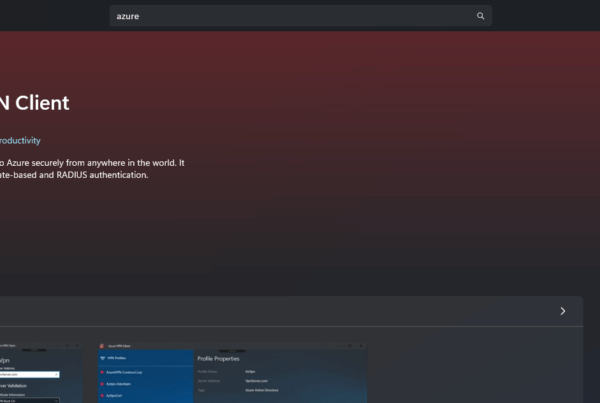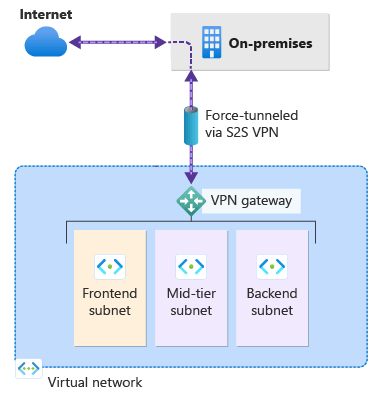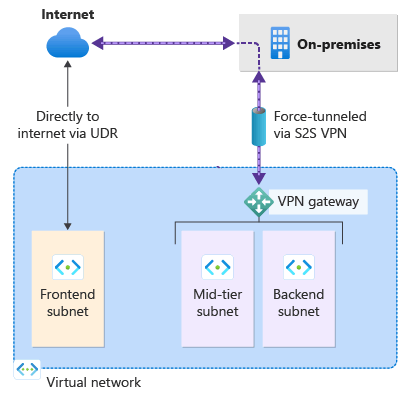Welcome to The Ultimate Azure Naming Convention. Azure is a powerful and versatile cloud platform, but without a clear and consistent naming convention, it can quickly turn into a maze of cryptic resource names, duplicated efforts, and costly mistakes. Whether you’re building a small proof of concept or managing a multi-subscription enterprise environment, a well-thought-out Azure naming strategy is essential for clarity, scalability, and governance. In this post, we’ll explore The Ultimate Azure Naming Convention, a practical, adaptable framework that helps teams stay organized, compliant, and efficient while making life easier for everyone from developers to auditors.
Table of Contents
Why Naming Conventions Are Important
Naming conventions in Azure are far more than a cosmetic preference, they are the foundation of operational efficiency and long-term maintainability. A consistent naming pattern allows teams to quickly identify the purpose, location, environment, and ownership of a resource without opening a single configuration file. This reduces onboarding time for new team members, streamlines automation scripts, simplifies cost tracking, and ensures compliance with both internal policies and external regulations. Poor or inconsistent naming, on the other hand, can lead to confusion, misconfiguration, and unnecessary costs. In short, a strong naming convention is an investment in clarity, governance, and collaboration.
The Ultimate Azure Naming Convention
Azure General
Covers fundamental Azure resources and account-wide settings such as subscriptions, billing, tags, and resource groups. This is the backbone for organizing and managing your cloud environment.
| Azure Service | Naming Convention |
|---|---|
| Management Group | mg- |
| Subscriptions | sub- |
| Resource Group | rg- |
| Managed Identity | id- |
| Policy Initiative | set- |
| Policy Definition | def- |
Azure Networking
Includes services for connecting resources securely and efficiently, such as Azure Virtual Network, Load Balancer, VPN Gateway, ExpressRoute, and Azure DNS. Handles both internal and external connectivity.
| Azure Service | Naming Convention |
|---|---|
| Application Gateway | agw- |
| App Security Group (asg) | asg- |
| Cdn Profile | cdnp- |
| Cdn Endpoint | cdne- |
| Expressroute Circuit | erc- |
| Expressroute Connection | gc- |
| Dns Zone | dnsz- |
| Private Dns Zone | pdnsz- |
| Firewall | afw- |
| Firewall Policy | afwp- |
| Bastion | bas- |
| Front Door | fd- |
| Front Door Firewall Policy | fdfp- |
| Load Balancer (internal) | lbi- |
| Load Balancer (external) | lbe- |
| Load Balancer Rule | rule- |
| Local Network Gateway | lgw- |
| Nat Gateway | ngw- |
| Network Interface (nic) | nic- |
| Network Security Group (nsg) | nsg- |
| Nsg Security Rules | nsgsr- |
| Network Watcher | nw- |
| Private Endpoint | pep- |
| Public Ip Address | pip- |
| Public Ip Prefix | ippre- |
| Route Filter | rf- |
| Route Table | rt- |
| Service Endpoint Policy | se- |
| Traffic Manager Profile | traf- |
| User Defined Route (udr) | udr- |
| Virtual Network | vnet- |
| Subnet | snet- |
| Virtual Network Peering | peer- |
| Virtual Wan | vwan- |
| Vpn Gateway | vpng- |
| Vpn Gateway Connection | vcn- |
| Vpn Site | vst- |
| Virtual Network Gateway | vgw- |
| Web App Firewall Policy | waf- |
| Waf Policy Rule Group | wafrg- |
Azure Compute & Web
Provides the infrastructure to run applications, from virtual machines and Azure App Service to serverless functions and batch processing. Ideal for hosting web apps, APIs, and workloads.
| Azure Service | Naming Convention |
|---|---|
| App Service Environment | ase- |
| App Service Plan | asp- |
| App Service | app- |
| Availability Set | avail- |
| Arc Enabled Server | arcs- |
| Arc Enabled Kubernetes Cluster | arck- |
| Disk Encryption Set | des- |
| Function App | func- |
| Shared Image Gallery | gat- |
| Managed Disk (os) | osdisk- |
| Managed Disk (data) | disk- |
| Notification Hubs | nft- |
| Notification Hubs Namespace | nftns- |
| Snapshot | snap- |
| Static Web App | stapp- |
| Virtual Machine Windows | vmw- |
| Virtual Machine Linux | vml- |
| Virtual Machine Scale Set Windows | vmss- |
| Virtual Machine Scale Set Linux | vmss- |
| Load Testing Service | lt- |
Azure Containers
Enables containerized application deployment and management using Azure Kubernetes Service (AKS), Azure Container Instances, and related services for scaling and orchestration.
| Azure Service | Naming Convention |
|---|---|
| Container Kubernetes Service | aks- |
| Container Registry | cr- |
| Container Instance | ci- |
| Service Fabric Cluster | sf- |
| Service Fabric Managed Cluster | sfmc- |
| Container App Environment | cae- |
| Container App | ca- |
Azure Databases
Offers fully managed database services like Azure SQL Database, Cosmos DB, PostgreSQL, and MySQL. Handles relational, NoSQL, and globally distributed data needs.
| Azure Service | Naming Convention |
|---|---|
| Cosmos Db Account | cosmos- |
| Cache For Redis | redis- |
| Sql Server | sql- |
| Sql Database | sqldb- |
| Mysql Database | mysqldb- |
| Postgresql Database | psqldb- |
| Sql Server Stretch Database | sqlstrdb- |
| Sql Managed Instance | sqlmi- |
Azure Storage
Covers blob, file, queue, and table storage for unstructured and structured data, with options for redundancy, scalability, and backup.
| Azure Service | Naming Convention |
|---|---|
| Storage Account | st- |
| Storsimple | ssimp- |
Azure AI & ML
Provides machine learning and artificial intelligence capabilities, including Azure Machine Learning, Cognitive Services, and OpenAI integrations for building intelligent applications.
| Azure Service | Naming Convention |
|---|---|
| Machine Learning Workspace | mlw- |
| Search Service | srch- |
| Openai Service | oai- |
| Speech Service | spch- |
| Language Service | lang- |
| Translator Service | tran- |
| Vision Service | vis- |
| Face Service | face- |
| Anomaly Detector Service | ad- |
| Content Safety Service | cs- |
| Personalizer Service | pers- |
| Bot Service | bot- |
| Document Intelligence Service | doci- |
| Metrics Advisor Service | ma- |
| Video Indexer Service | vi- |
| Immersive Reader Service | ir- |
| Microsoft Fabric | fab- |
Azure Analytics & IoT
Includes big data and analytics tools such as Azure Synapse Analytics, HDInsight, and IoT Hub for real-time telemetry and event processing from devices.
| Azure Service | Naming Convention |
|---|---|
| Analysis Services Server | as- |
| Databricks Workspace | dbw- |
| Stream Analytics | asa- |
| Data Explorer Cluster | dec- |
| Data Explorer Cluster Database | dedb- |
| Data Factory | adf- |
| Data Lake Store Account | dls- |
| Data Lake Analytics Account | dla- |
| Event Hub Namespace | evhns- |
| Event Hub | evh- |
| Event Grid | evgd- |
| Event Grid Subscription | egst- |
| Event Grid Topic | evgt- |
| Hdinsight - Hadoop Cluster | hadoop- |
| Hdinsight - Hbase Cluster | hbase- |
| Hdinsight - Kafka Cluster | kafka- |
| Hdinsight - Spark Cluster | spark- |
| Hdinsight - Storm Cluster | storm- |
| Hdinsight - Ml Services Cluster | mls- |
| Iot Hub | iot- |
| Iot Device Provisioning Services | provs- |
| Provisioning Services Certificate | pcert- |
| Power Bi Embedded | pbi- |
| Power Bi Workspace | pbiw- |
| Time Series Insights Environment | tsi- |
| Synapse Analytics Workspace | synw- |
| Synapse Analytics Sql Dedicated Pool | syndp- |
| Synapse Analytics Spark Pool | synsp- |
| Digital Twins Instance | dt- |
| Batch Account | ba- |
Azure Virtual Desktop
Azure Virtual Desktop and related services for providing secure, scalable virtualized Windows or app environments to users.
| Azure Service | Naming Convention |
|---|---|
| Virtual Desktop Host Pool | vdpool- |
| Virtual Desktop App Group | vdag- |
| Virtual Desktop Workspace | vdws- |
Azure Dev Tools
Developer-focused resources like Azure DevOps, Repos, Pipelines, and testing services to streamline code development, CI/CD, and project management.
| Azure Service | Naming Convention |
|---|---|
| App Configuration Store | appcs- |
| Signalr | sigr- |
| Maps Account | map- |
Azure Integration
Covers services like Logic Apps, Service Bus, and Event Grid to connect applications, automate workflows, and manage event-driven architectures.
| Azure Service | Naming Convention |
|---|---|
| Api Management | apim- |
| Integration Account | ia- |
| Logic Apps | logic- |
| Service Bus Namespace | sbns- |
| Service Bus Queue | sbq- |
| Service Bus Topic | sbt- |
Azure Migration
Azure tools for assessing, planning, and executing migrations from on-premises or other clouds, such as Azure Migrate and Database Migration Service.
| Azure Service | Naming Convention |
|---|---|
| Database Migration Service | dms- |
| Database Migration Project | migr- |
| Recovery Services Vault | rsv- |
Azure Management
Centralized tools for monitoring, security, and governance like Azure Monitor, Security Center, Cost Management, and Policy for compliance and performance oversight.
| Azure Service | Naming Convention |
|---|---|
| Automation Account | aa- |
| App Insights | appi- |
| Monitor Action Group | ag- |
| Purview Instances | pview- |
| Blueprint | bp- |
| Blueprint Assignment | bpa- |
| Key Vault | kv- |
| Log Analytics Workspace | log- |
Conclusion
In this blog post we Learn about The Ultimate Azure Naming Convention. A well-designed Azure naming convention isn’t just a “nice-to-have”, it’s the glue that holds your cloud environment together. By adopting a consistent, logical, and scalable approach to naming, you set the stage for better collaboration, easier troubleshooting, streamlined automation, and stronger governance. The time you invest now in defining and enforcing these standards will pay off exponentially as your Azure footprint grows. Remember: clarity today prevents chaos tomorrow. Start small, refine as you go, and make your naming convention a living standard that evolves alongside your business needs. Did you enjoy this article? Dont forget to follow us and share this article. If you have any questions or need further assistance, feel free to reach out or leave a comment below.














